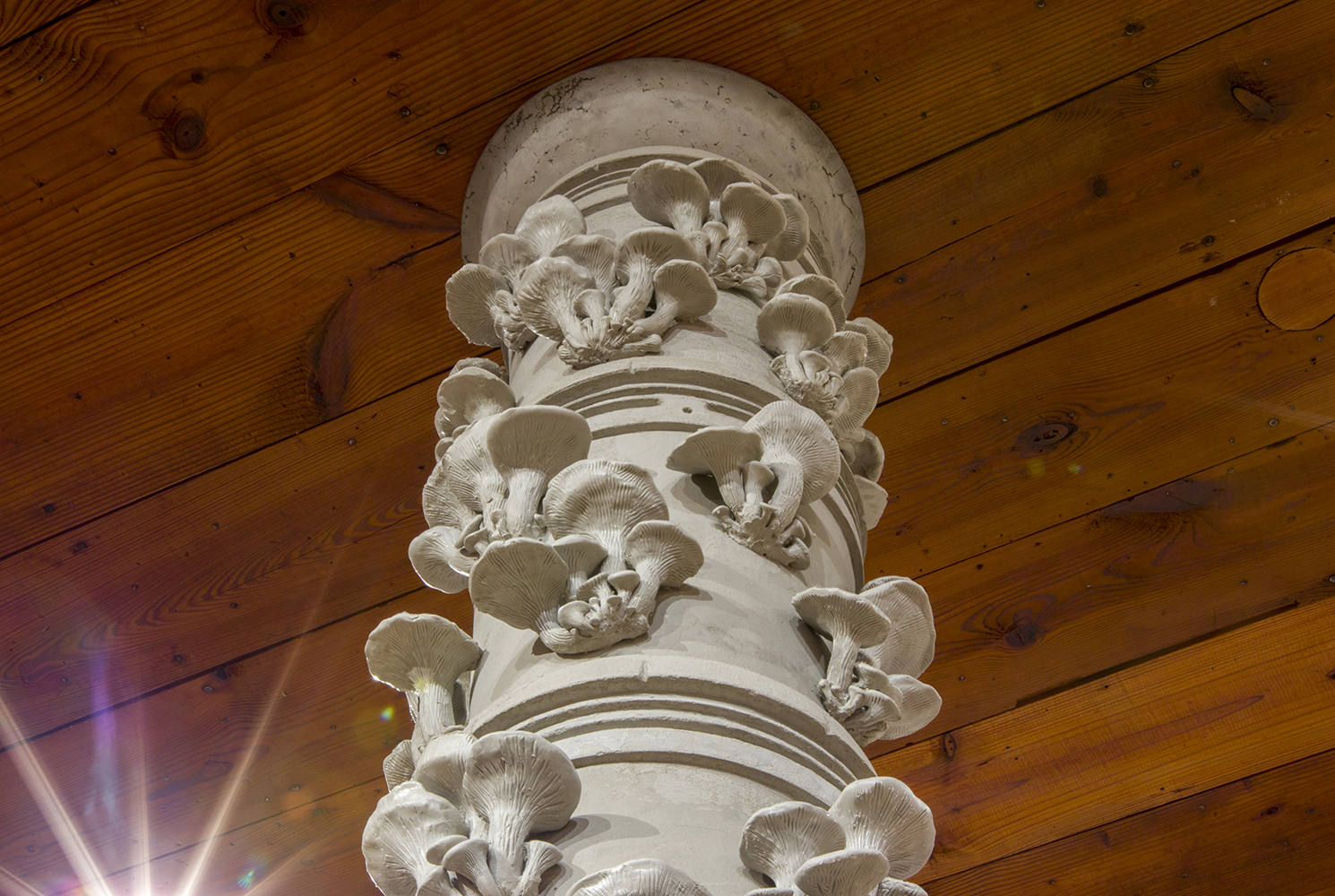
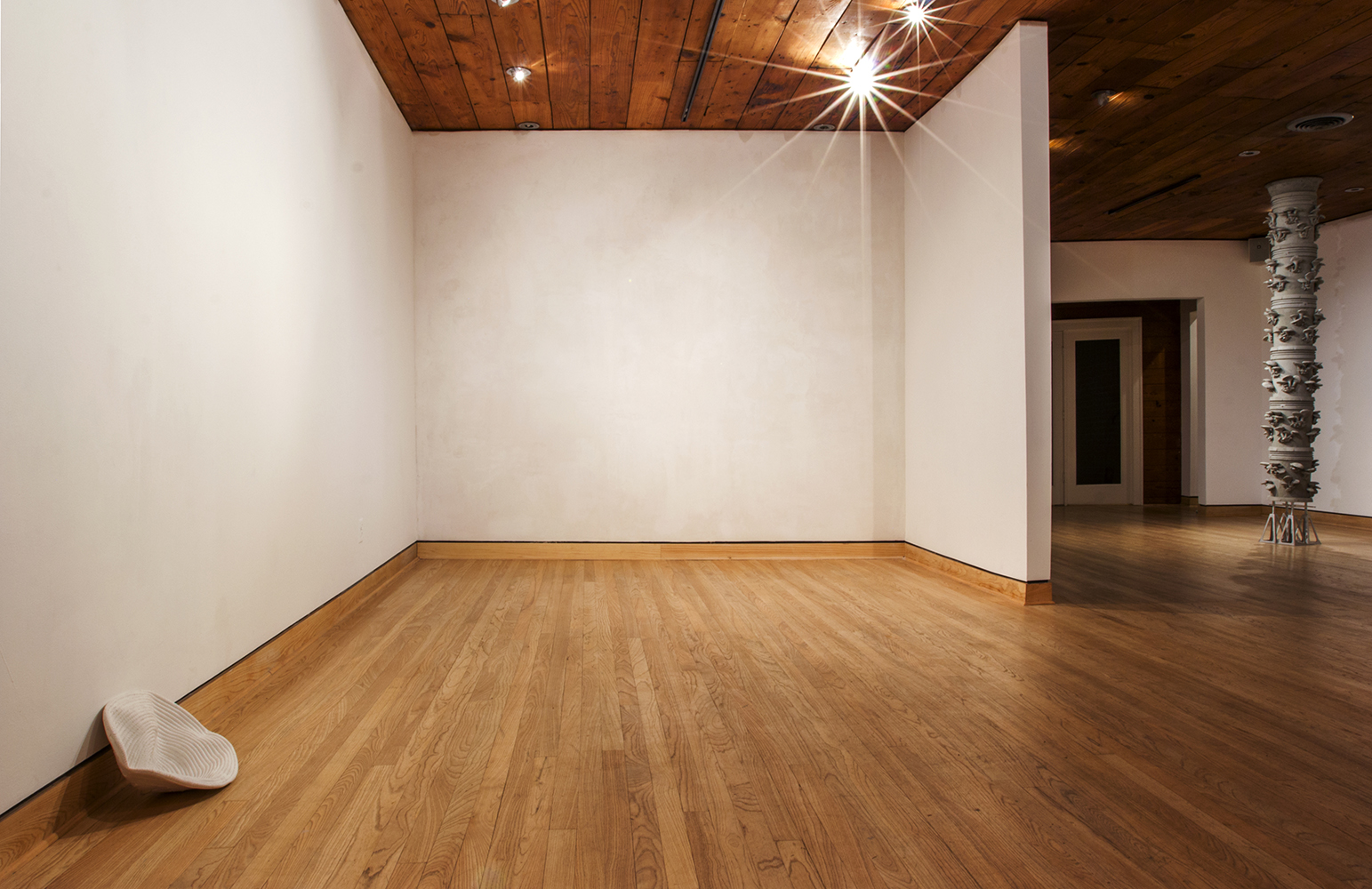
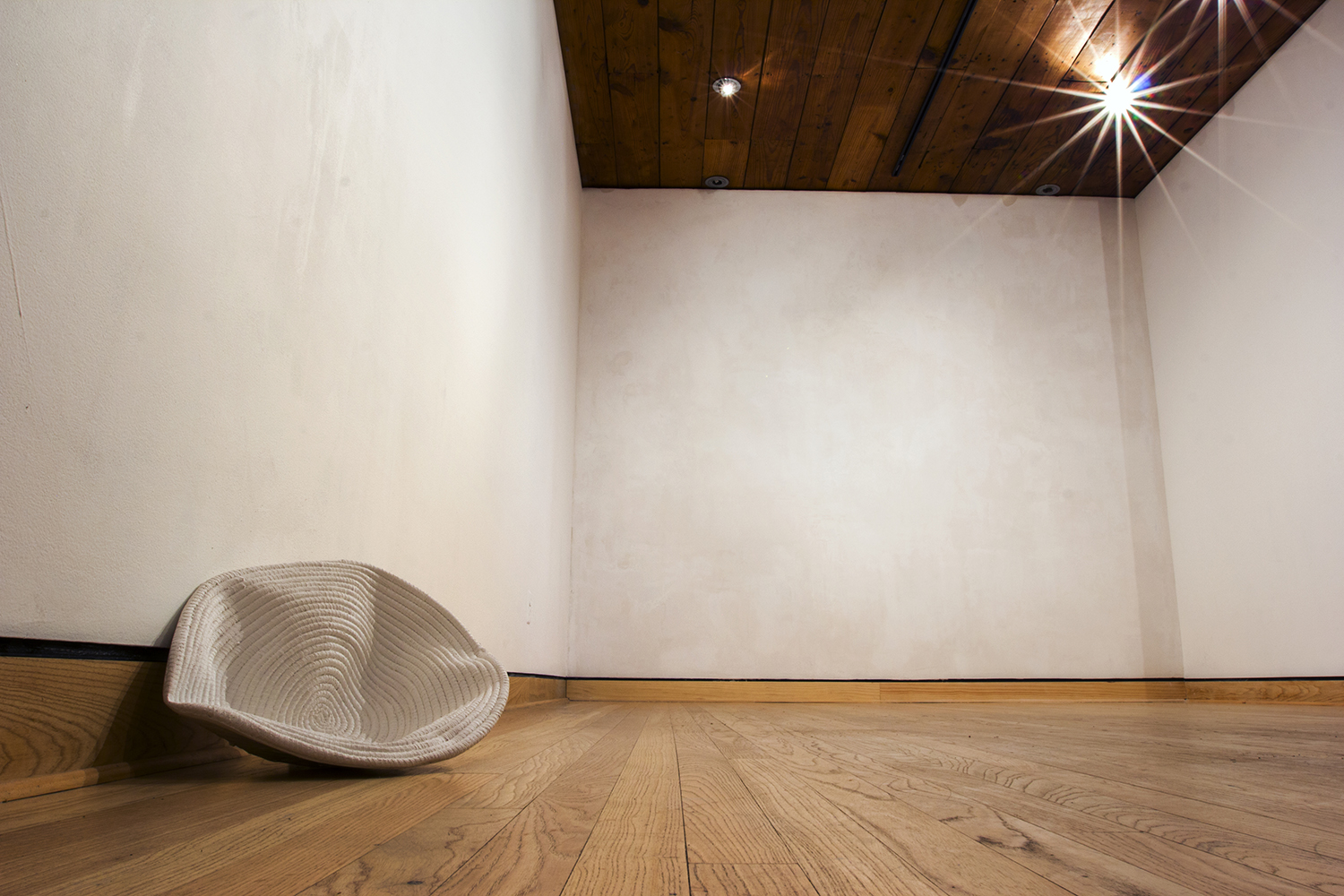
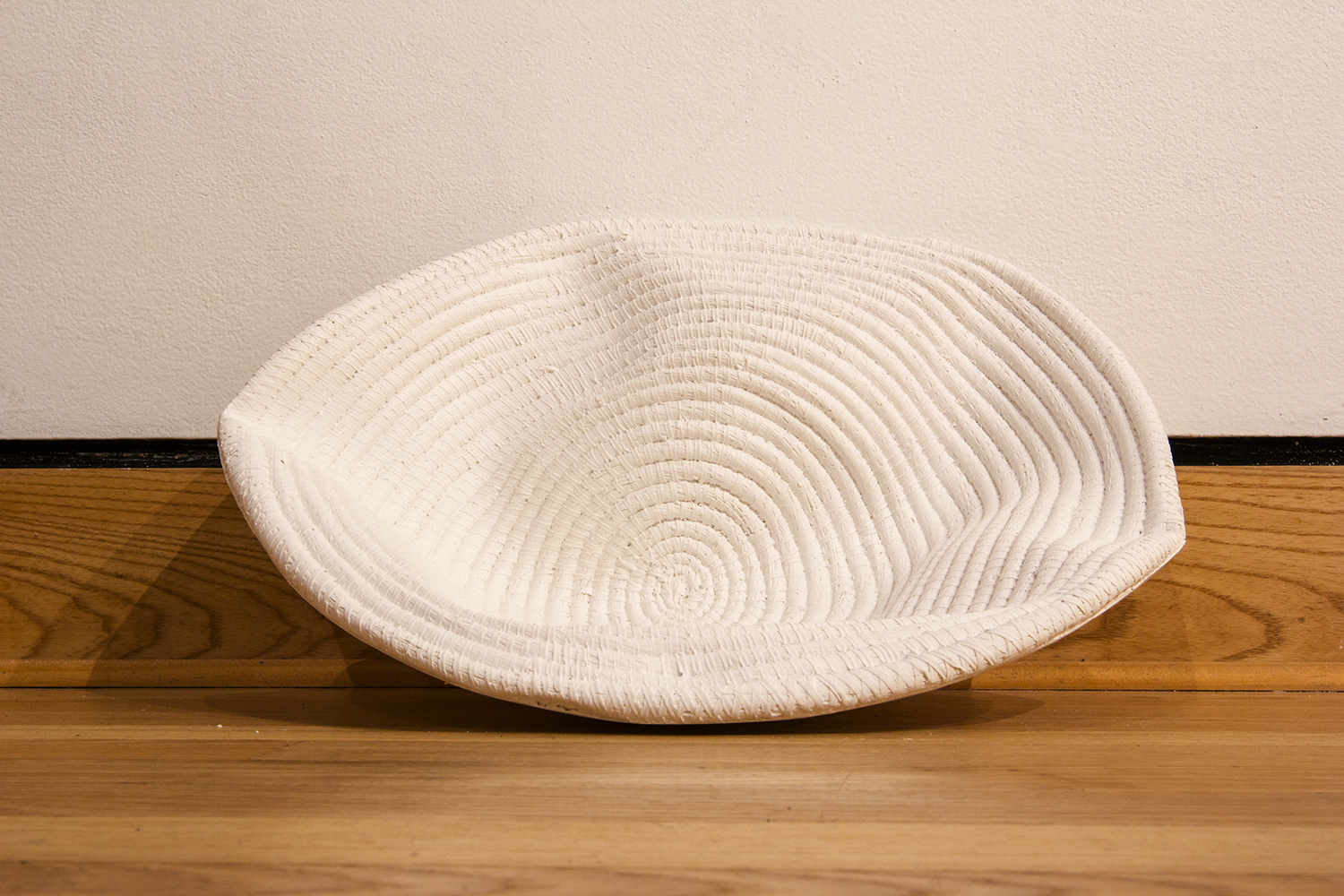
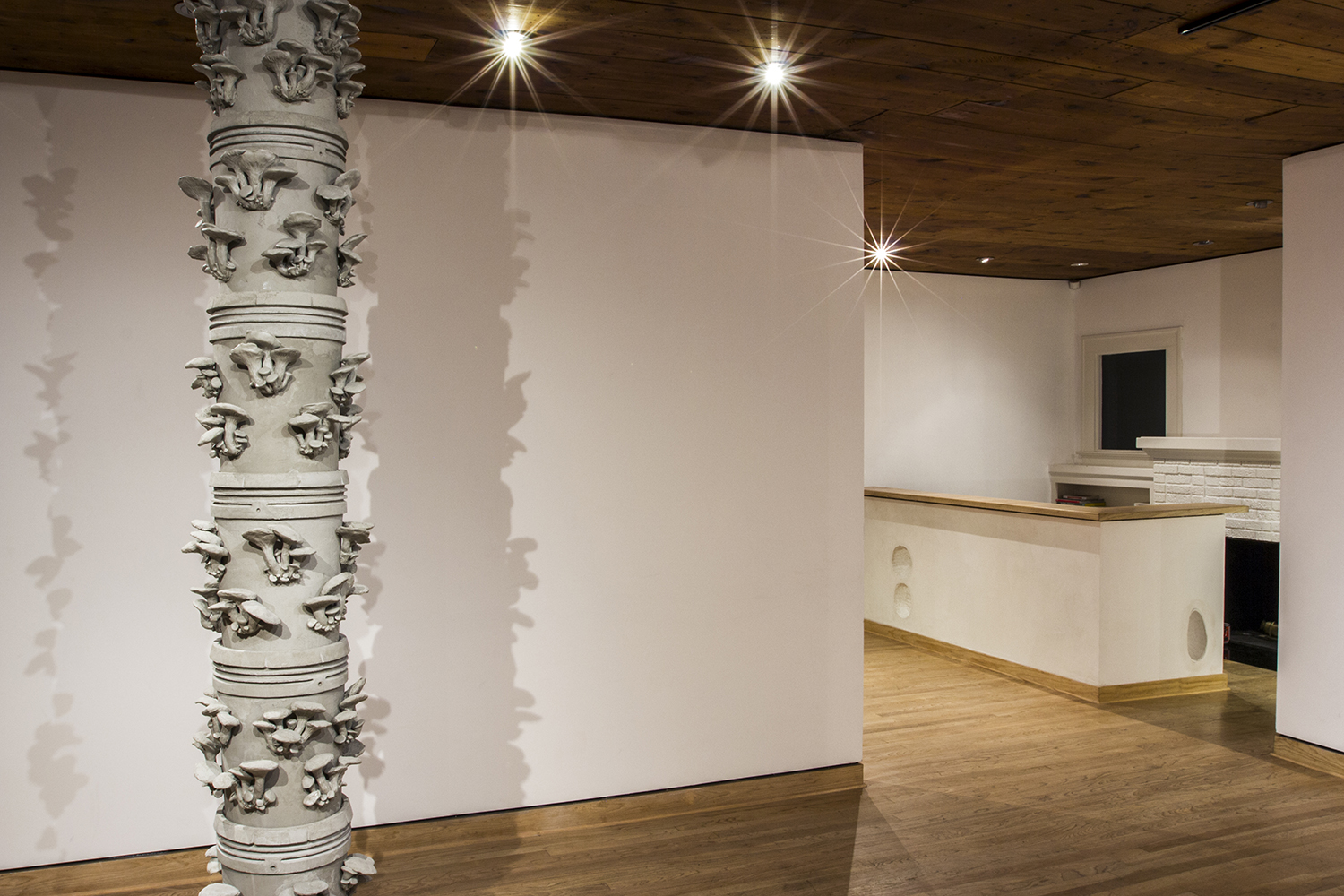
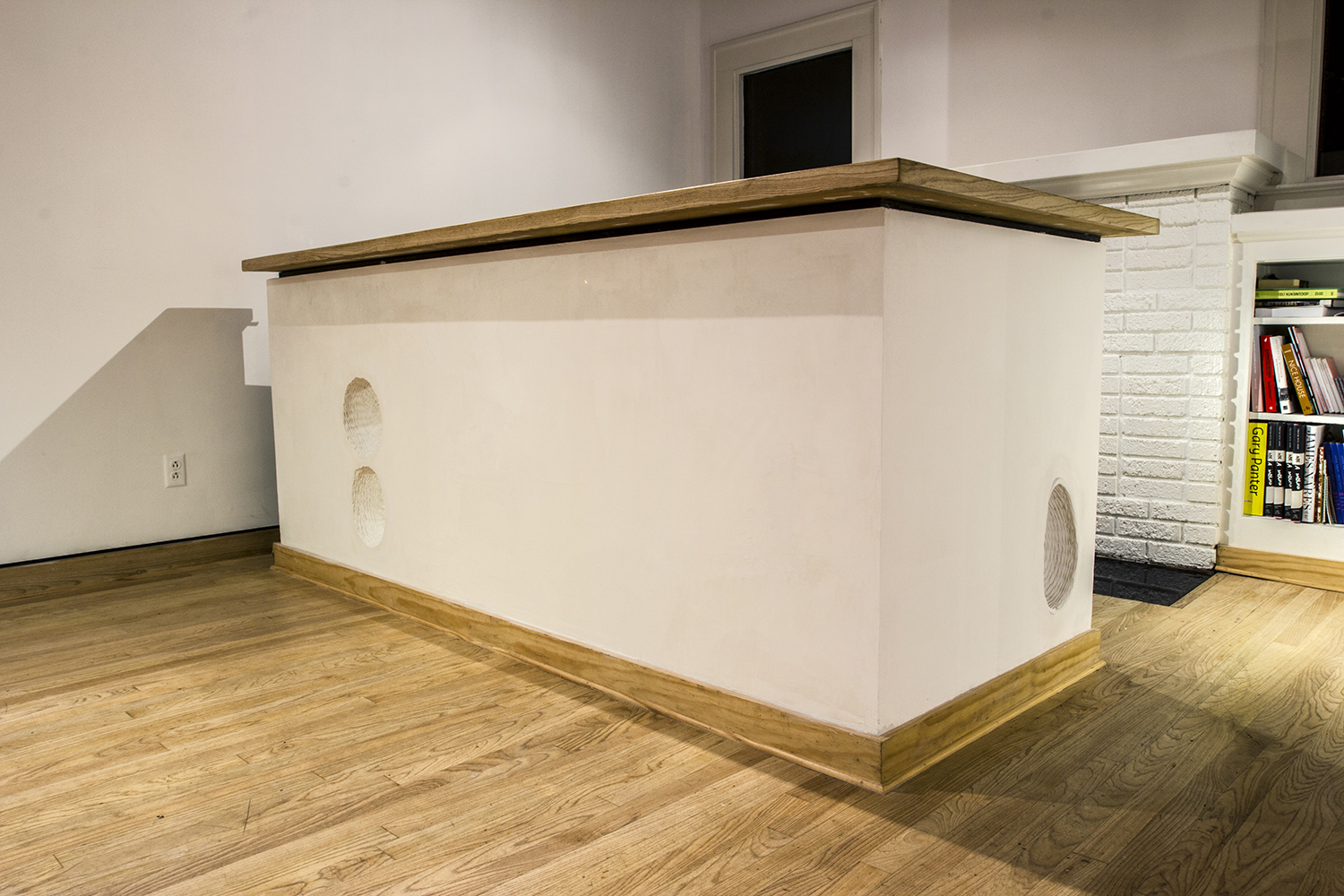
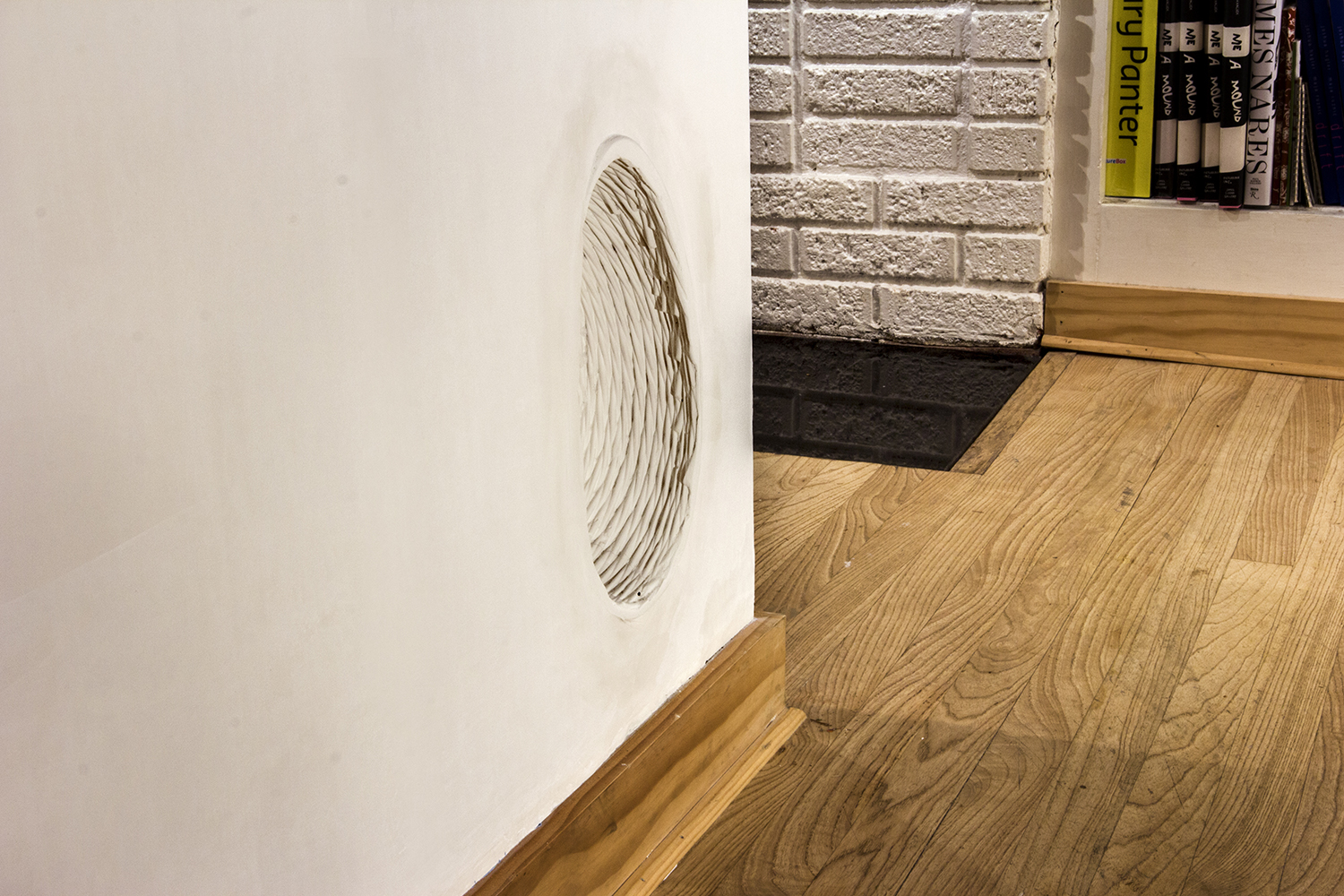
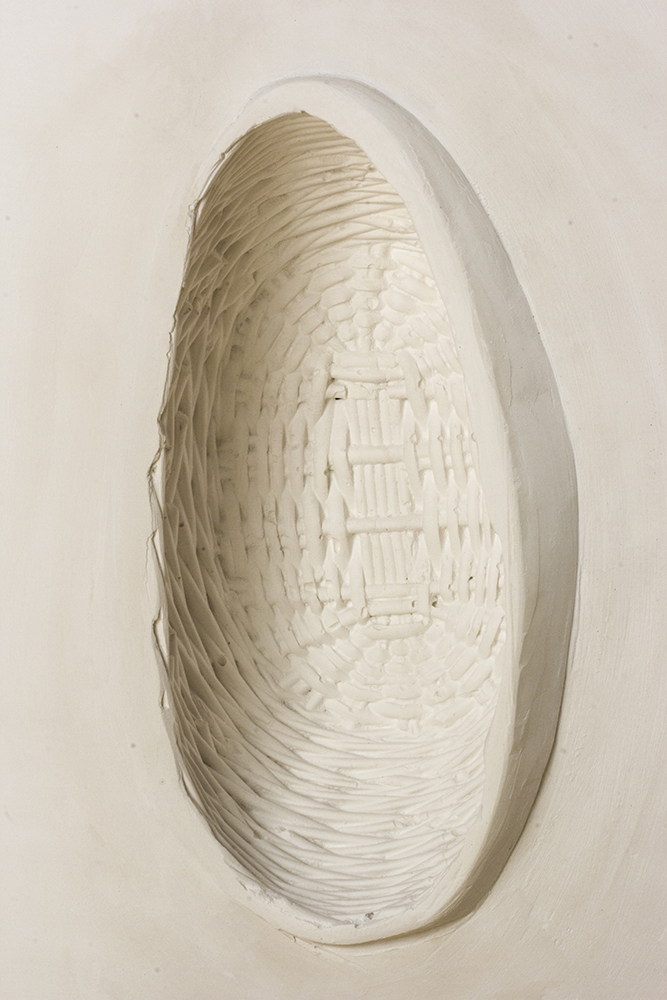
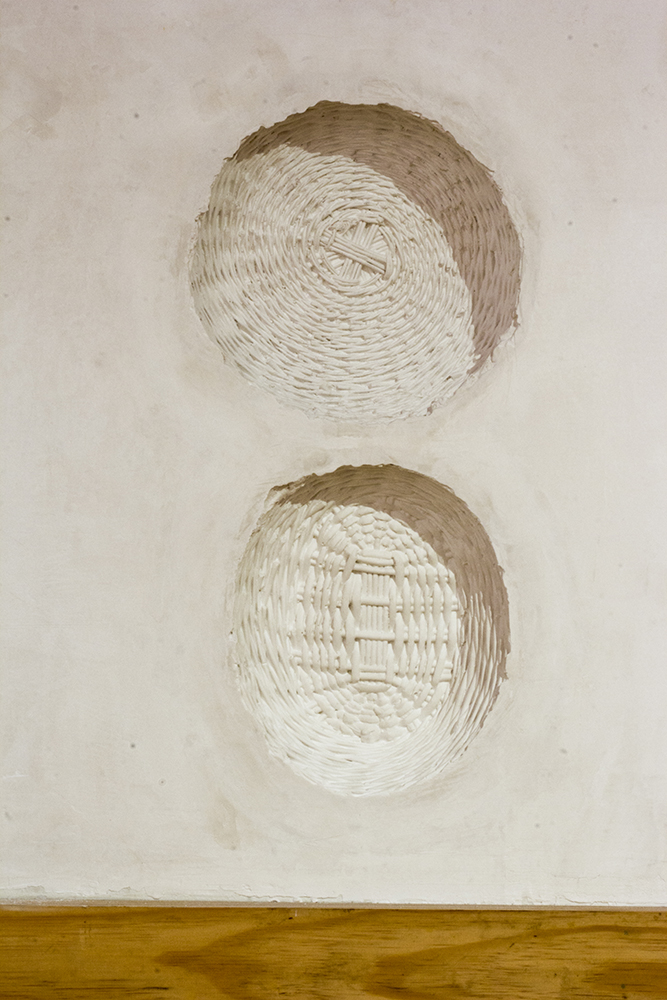
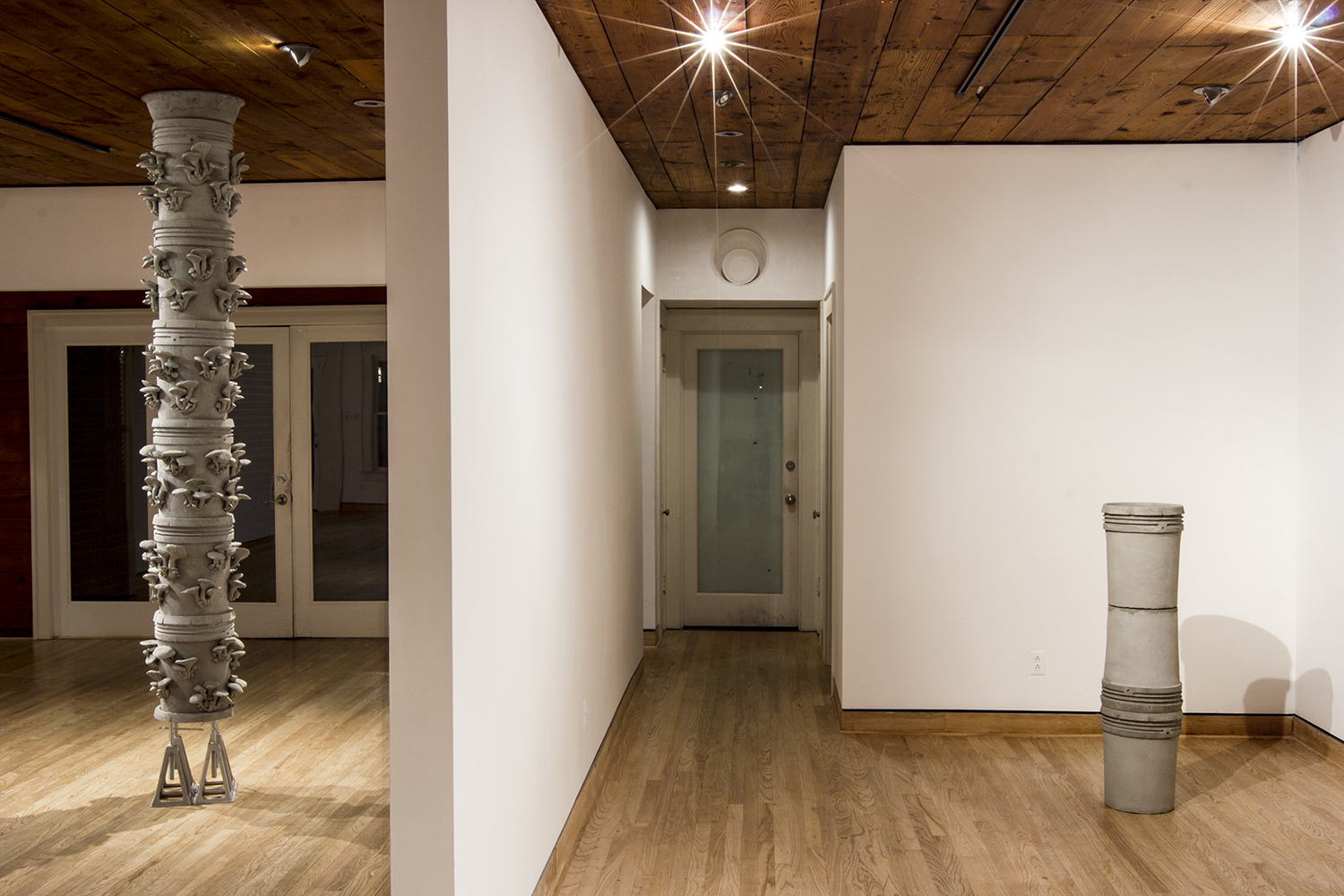
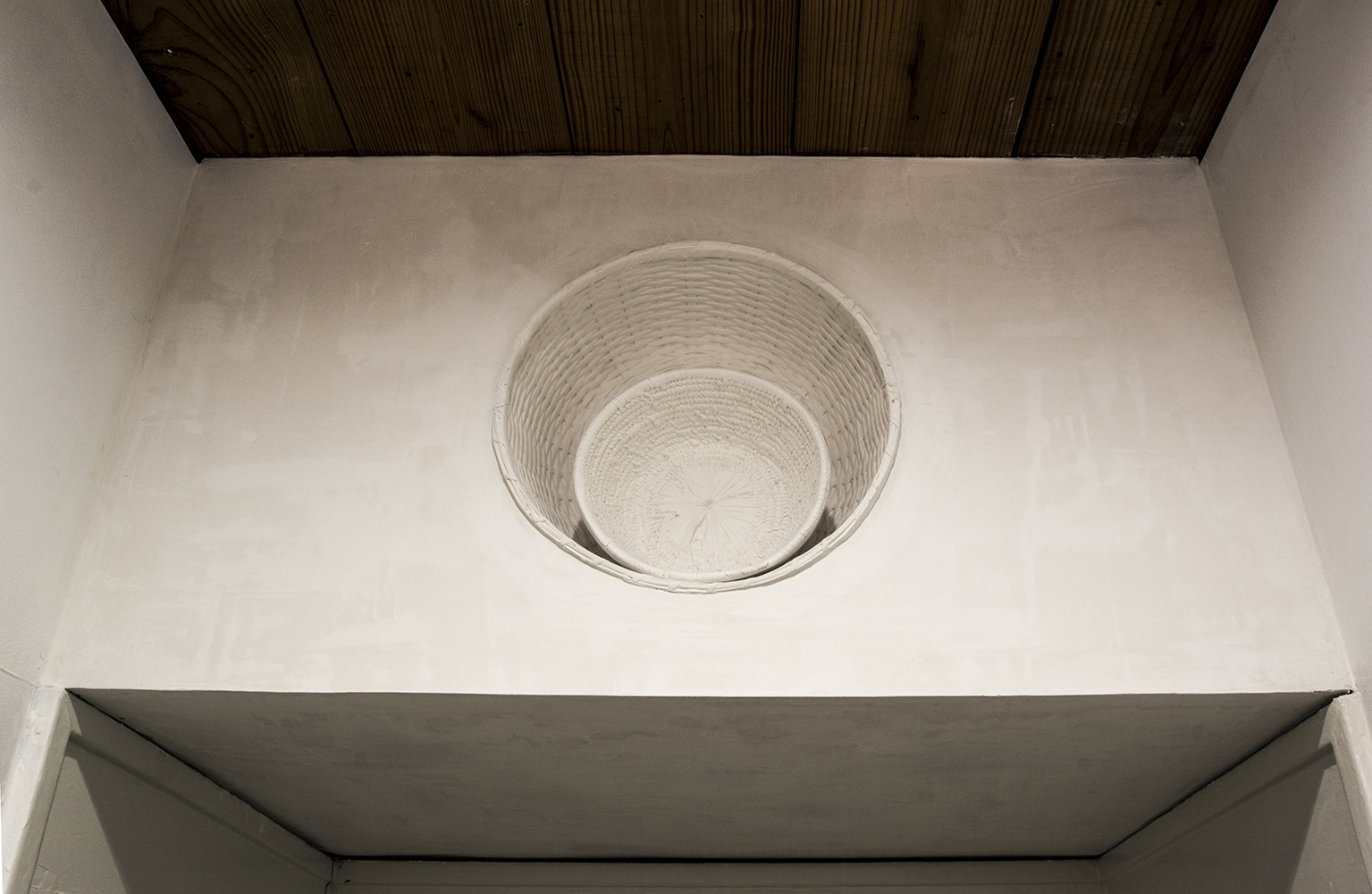
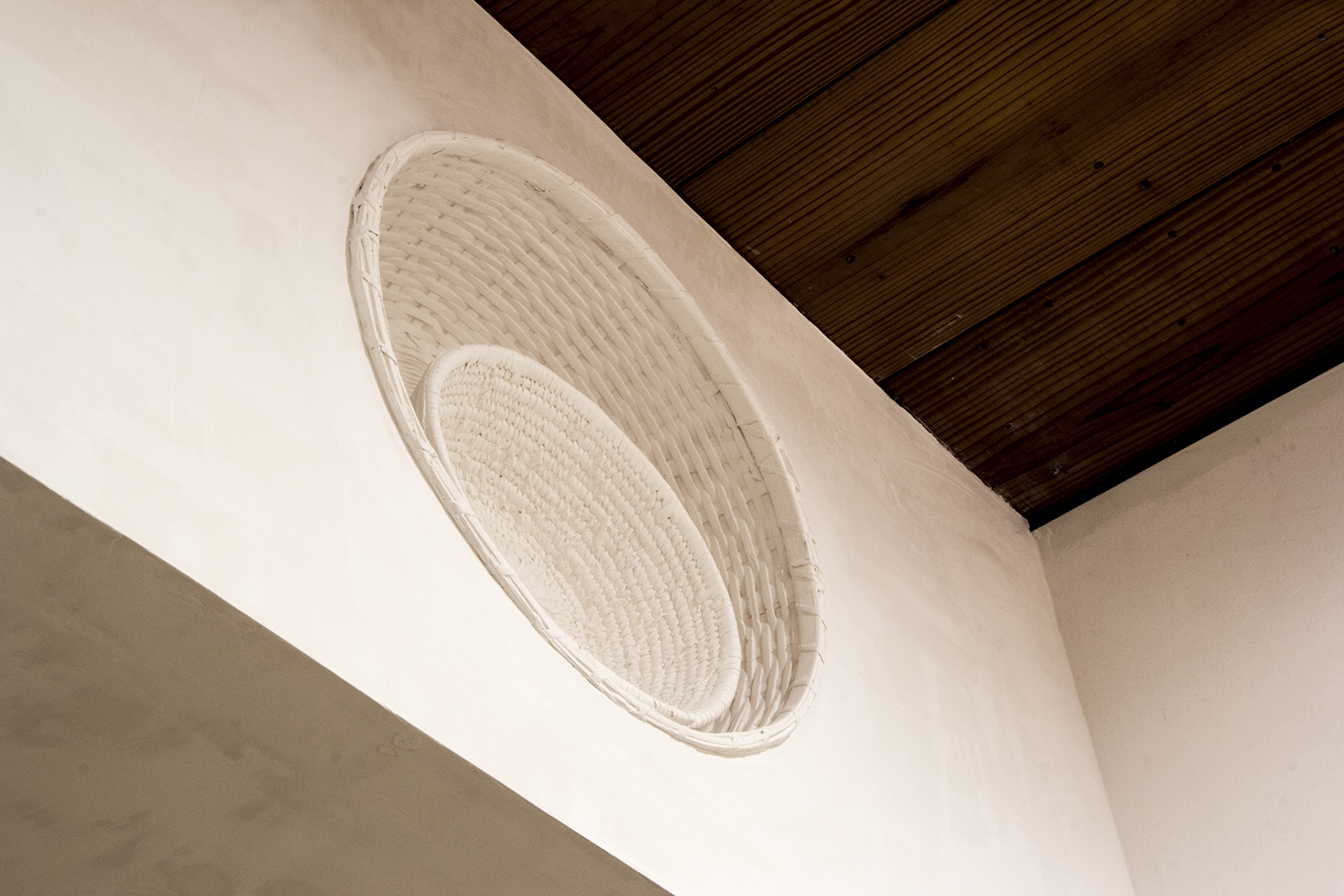
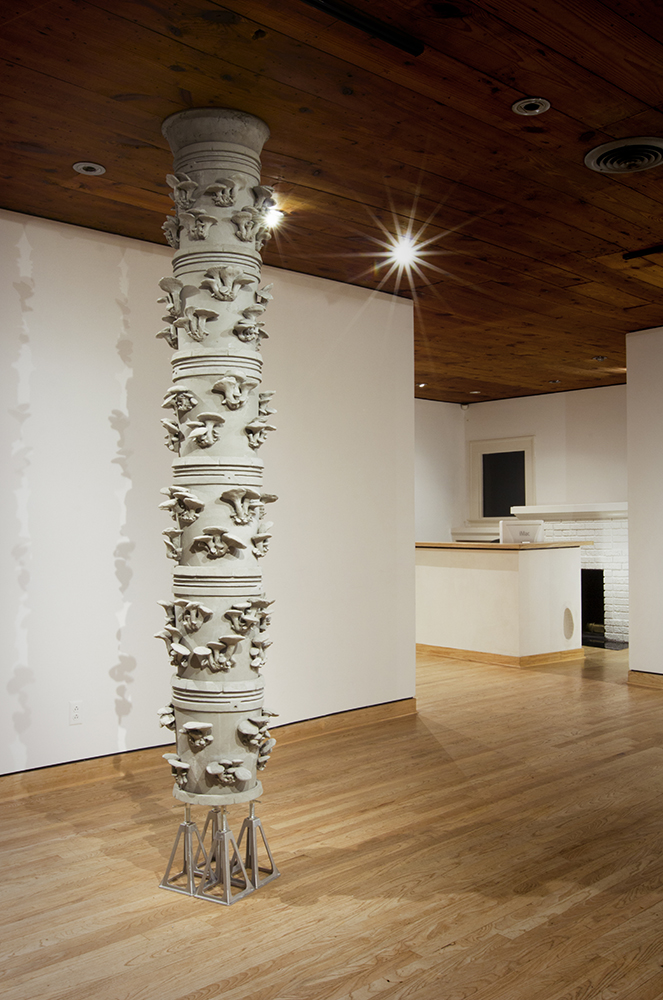
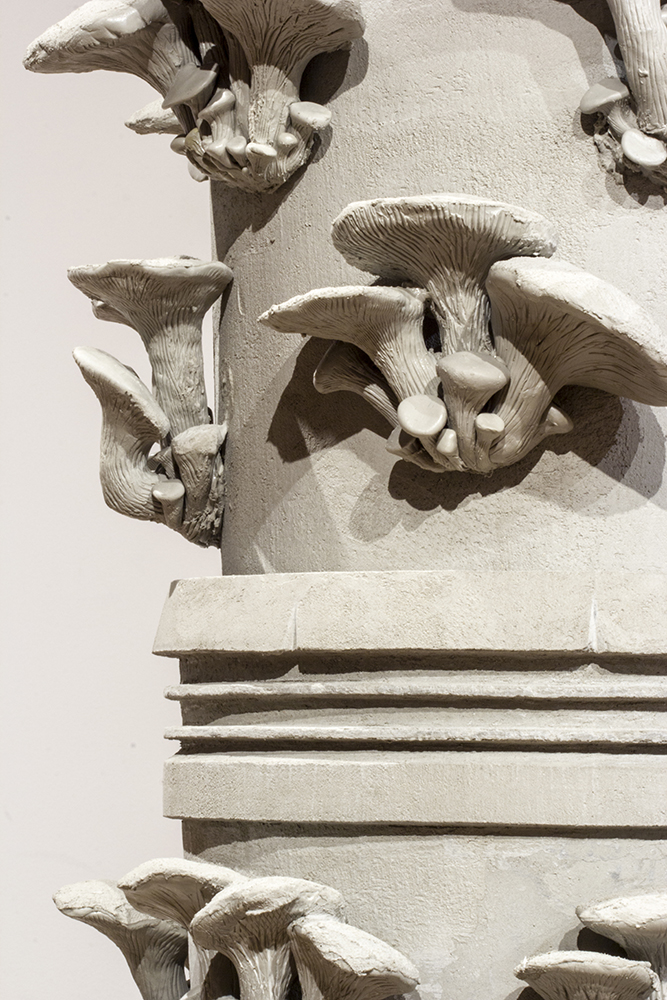
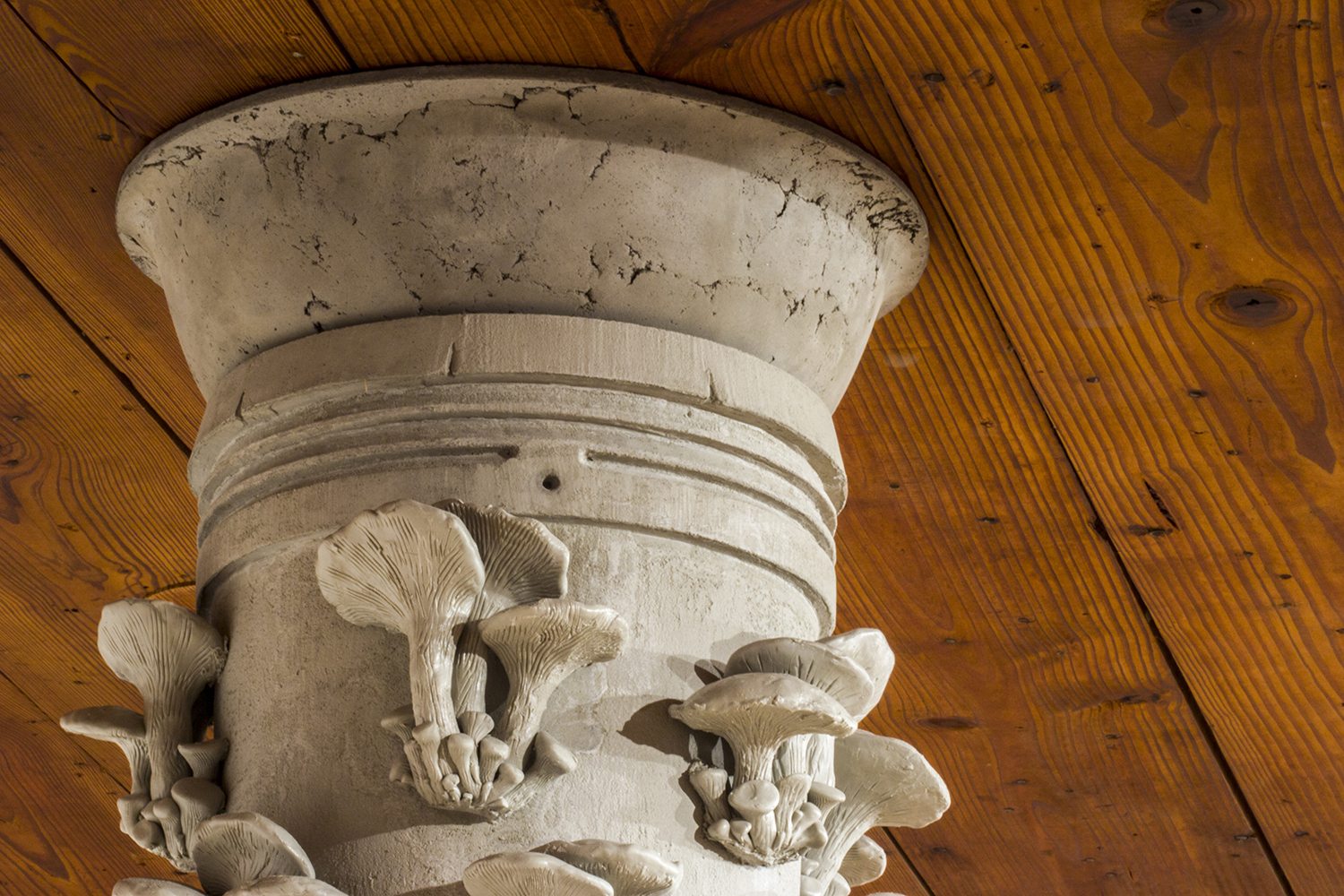
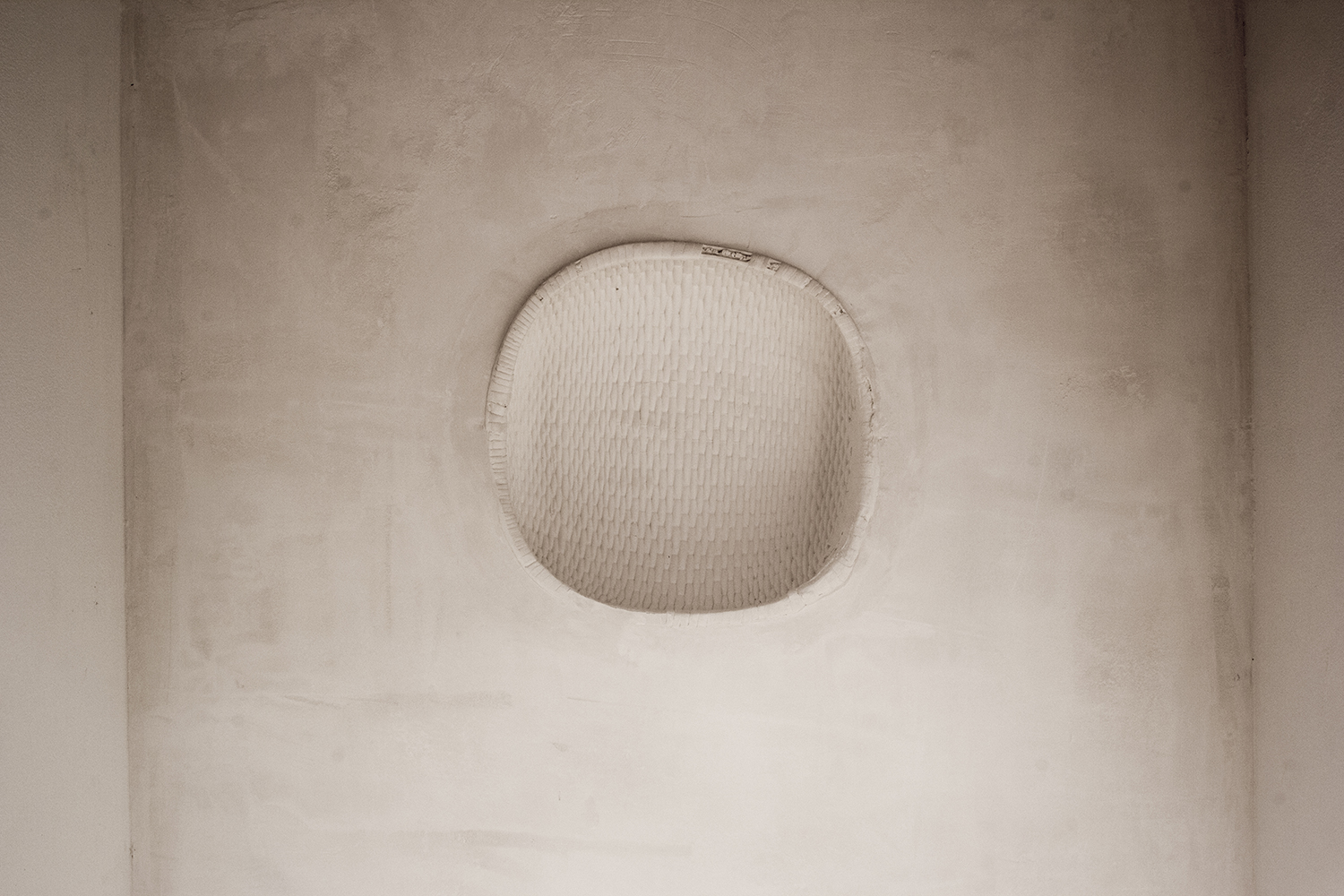
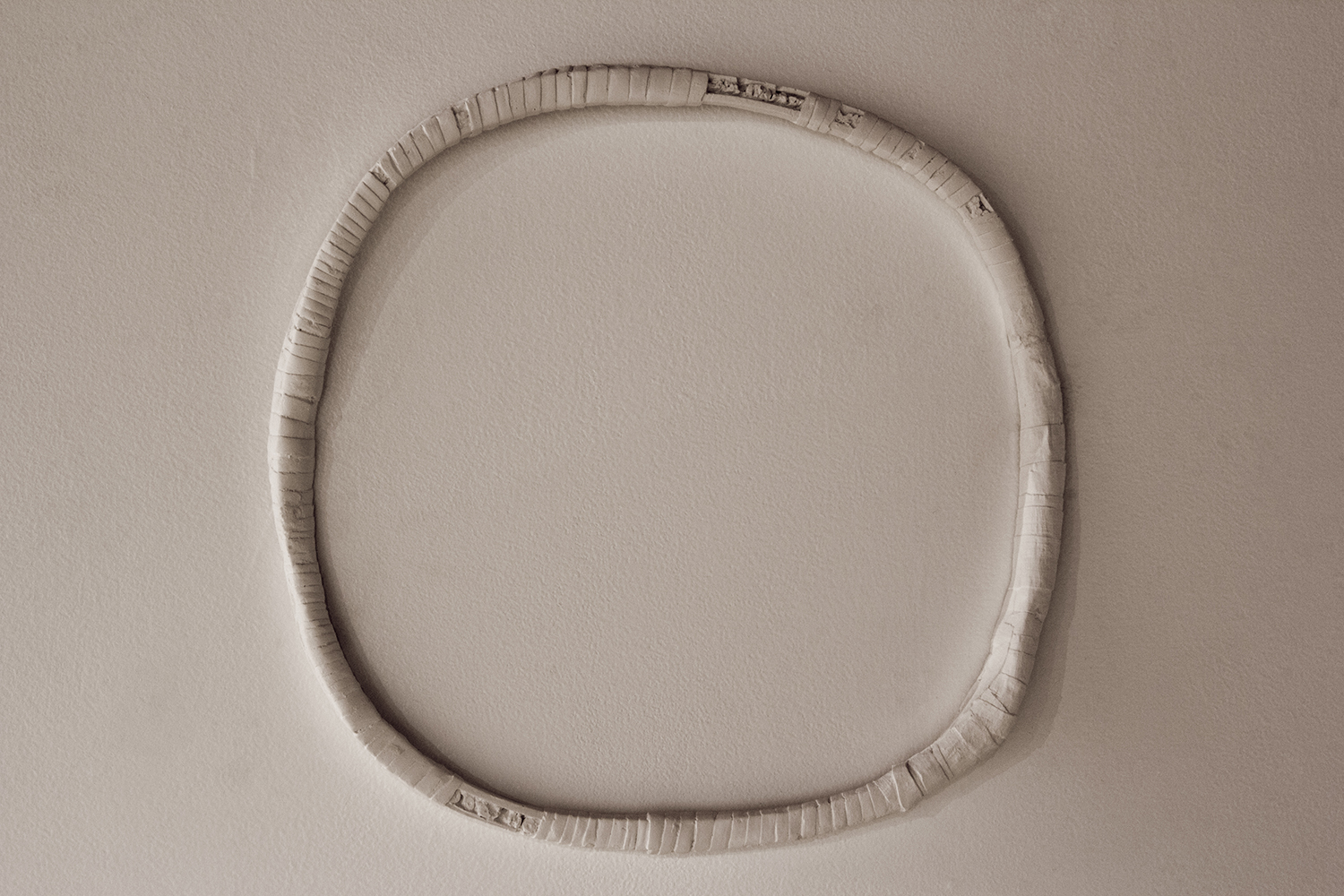
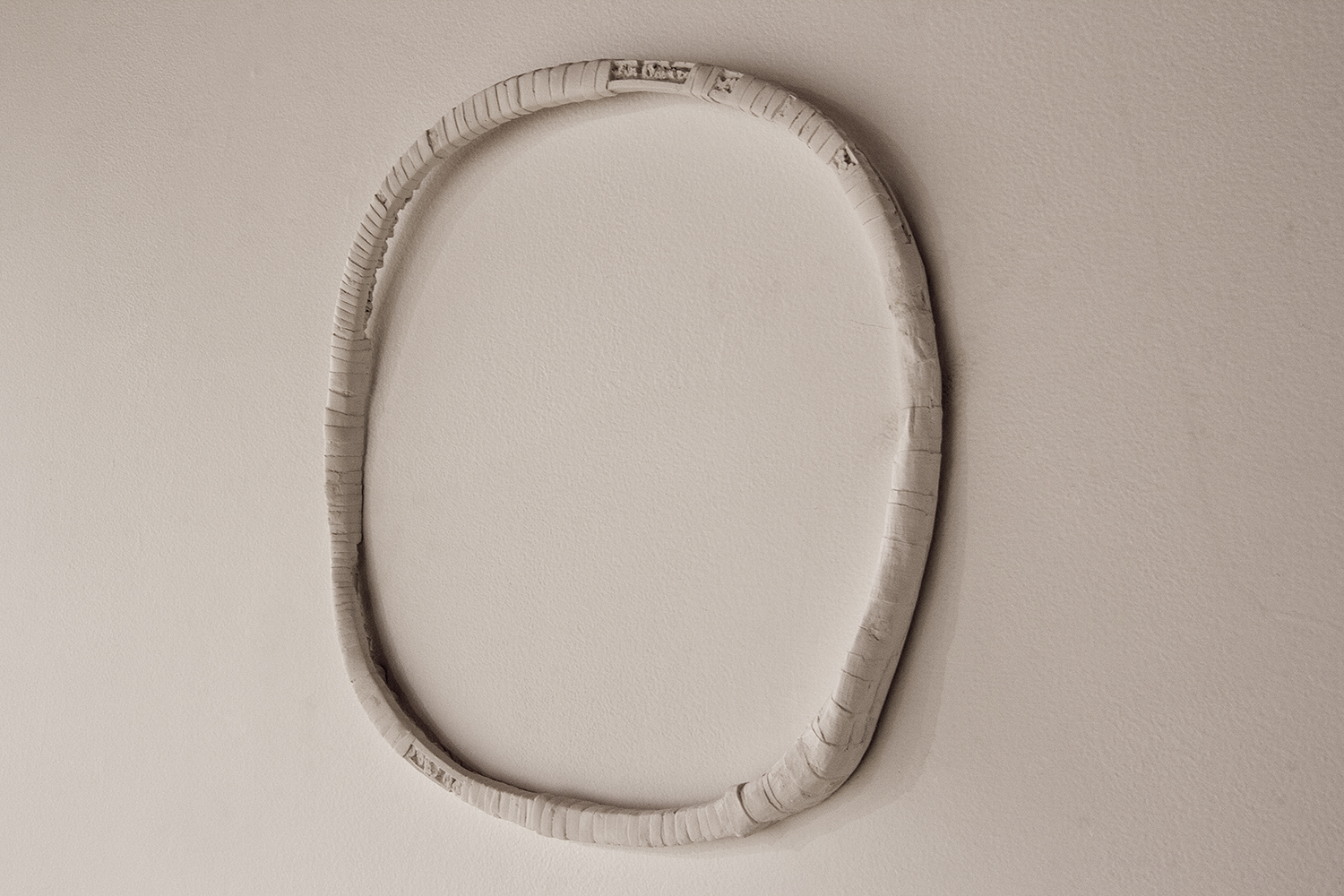
Stringer Lode, 2016
gypsum cement, polymer concrete, epoxy putty, polystyrene, jacks
She Works Flexible (Houston, Texas)
PDF of press release
PDF of essay: "On Whose Back" by Wendy Vogel
List of works:
Wattle and Daub: wall and floor, 2016 (gypsum cement, wall: 9 x 10 ft., object: 14 x 16 x 11 inches)
Wattle and Daub: desk, 2016 (gypsum cement, 42 x 96 x 45 inches)
Wattle and Daub: above door, 2016 (gypsum cement, 23 x 41 x 28 inches)
Cistern 1, 2016 (polymer concrete, epoxy putty, polystyrene, jacks, 109 x 15 x 15 inches)
Wattle and Daub: cupboard, 2016 (gypsum cement, 109 x 40 x 6 inches)
Wattle and Daub: rim, 2016 (gypsum cement, 14 x 14 x 1 inches)
My current projects focus on systems and networks that are ubiquitous yet often unnoticed: the electrical wiring and plumbing in the walls, the sprawling mycelium underfoot, and the goods created by cottage industries. I transform the guts of these systems, asserting their strength in formal terms by crafting buckets into columns, pallets into plinths, and baskets into niches. I am investigating histories of home-labor systems and newer iterations found in hacker-spaces, Etsy sites, artisanal food production, and urban mining, to explore relationships between ideas of American innovation and issues of precarity, gender, and class. In this work, I question the contours of value in the un/seen forms that surround us, to engage issues of the similarly un/seen labor of their construction.
From the Press Release:
These systems are successful in no small part because they go unremarked; if most public acclaim is reserved for the loudest, the grandest, and the most exceptional, these networks assert the value of dispersion, interdependence, and restraint. So there’s a twist to Cox-Richard’s celebration of the overlooked: in rendering them visible, she subverts their natural assets. It’s an irony echoed in the show title’s allusion to mining: a stringer lode, unlike a concentrated mother lode, is a fine lacework of veins. To get at the ore a miner needs to demolish the countryside and sift the rubble. Delicacy, context and continuity fall prey to blunt, analytical differentiation. That sense of dislocation – of an object designed for connection newly isolated – gives Cox-Richard’s sculptures their eerie potency. For Wattle and Daub she sets plaster casts of woven baskets into the gallery wall, recessed like niches. Though they allude to practical handiwork and craft economies, their uselessness as receptacles implicates them in a very different system of evaluation. Their placement – a little too low, a little too close to a corner – likewise interrupts the typical function of the wall, both in terms of display and support. They are as much breach as sculpture.
The carved columns in Cistern depict stacks of five-gallon buckets repurposed for DIY mushroom cultivation. Many mycologists today believe that mushrooms can mitigate or even reverse damages inflicted on the environment by cleaning up pollutants, rehabilitating depleted soil, and growing renewable building materials. Cox-Richard’s floor-to-ceiling columns, though not in fact structural, embody that optimism, implying reinforcement and ascendant ambition.